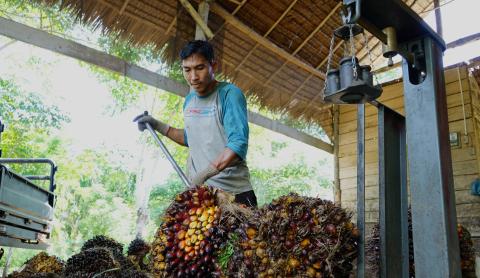Production area vs supply chain: Decoding EUDR requirements for risk assessments
Guidance from the European Commission (EC) on the EU Deforestation Regulation has caused confusion about where stakeholders should assess risks in relation to tax, anti-corruption, trade and customs laws.
On 13 November, the EC published an official guidance document for the EUDR as a Commission Notice which is now available in all EU languages.
While the Guidance is helpful, it raises some new ambiguities. One major issue is how to interpret the concept of ‘area of production’ and whether risk assessments and mitigation activities should be conducted along supply chains.
See the technical analysis here.
Assess risks beyond the farm or forest gate?
In particular, the contentious issue lies in whether Operators should conduct risk assessments related to tax, anti-corruption, trade and customs laws, only as they apply to the area where the commodities were produced – or if risk assessments should also extend to additional entities that make up the commodity or product supply chain.
The EUDR states that risks of legally non-compliant production must be assessed for eight categories of legislation, applicable in the country of production and concerning the legal status of “the area of production”. The area of production refers to the land where the commodities were produced, or harvested in the case of wood products, or the establishments where cattle were raised. In other words, the EUDR text limits Operator’s risks assessments to the areas of production and the entities responsible for these.
However, the Guidance appears to extend Operator’s risks assessments beyond the area of production and along entire supply chains. For the category of tax, anti-corruption, trade and customs laws, it states explicitly that this applies to laws concerning “the relevant supply chains entering the Union market, or leaving it”, linking the laws to the objectives of the regulation or the agricultural or forestry sectors.

The interpretation of the Guidance, that companies must evaluate non-compliance risks for tax, anti-corruption, customs and trade laws along the supply chain, has created confusion. The EUDR text and the Commission’s FAQ confine compliance assessments to the areas of production and presumably the entities responsible for these. Expanding beyond the production site to the supply chain, appears to stray from the language in the regulation itself.
The EUDR is designed to protect the world’s forests, preserve biodiversity and combat climate change.
It seeks to create deforestation-free supply chains by prohibiting certain commodities associated with deforestation – or produced in violation of the laws in the country of production – from being placed on the EU market or exported from it.
A need for a clearer direction
This new interpretation by the Guidance must be clarified or rectified by the EC, to help companies meet their obligations efficiently and without confusion.
We, at Preferred by Nature, strongly believe that legality should be considered not only at the harvesting site, but also throughout the supply chain. We would encourage commercial enterprises to take this approach within their due diligence systems. However, it is still critical to have clarity on the EUDR’s expectations.
This area is not the only area where clarification is required on the EUDR Guidance. Read our article on the EUDR Guidance on Labour Rights.
For more information on the EUDR, visit our dedicated webpage.




